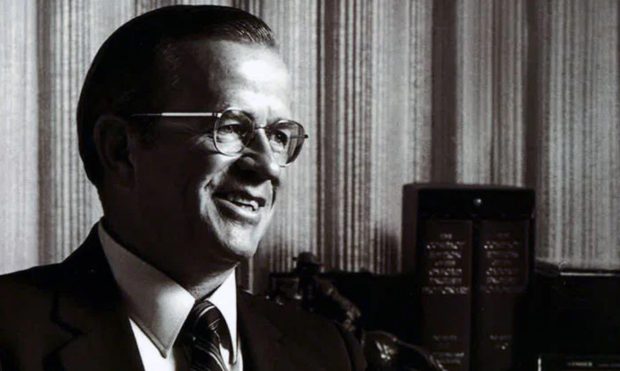Dee Hock’s Vision Shaped Payments’ Modern Age — From Cards to Crypto

More than 20 years before his passing last week at the age of 93, Visa founder and CEO Emeritus Dee Hock wrote a book that is an apt summation of where we are today.
“The Birth of the Chaordic Age.”
If your mind’s eye incorrectly read that as “Chaotic,” you’re forgiven, as Hock’s coining of the term and combination of two words was as unique then as it is now.
Read it again — not chaotic.
But chaordic.
A combination of order and chaos.
And in Hock’s telling of it, organizations and ecosystems can be marked by both attributes, can grow and thrive, and in time, can change the very ways in which society interacts.
We’re reminded, of course, of the way things are now, as decentralized finance networks take shape, crypto grabs headlines, the great digital shift is given tailwind by the pandemic and tap to pay is no novelty but a preferred means of transacting.
Chaordic qualities can mark individual companies, and individual companies can leave an indelible stamp on all of us. So it was and is with Visa, which Hock founded, and which has done much to help change commerce in ways great and small.
We’ve paid tribute to Hock in various ways, as far back as decade ago when, at the first PYMNTS Innovation Project in 2012 awarded Hock a Lifetime Achievement award.
Seismic Impact on Cards and Beyond
And as the news travels throughout the payments landscape of his passing, to gauge just how seismic an impact:
David S. Evans, author of “Paying with Plastic” and chairman, Global Economics Group, noted to PYMNTS in a statement that Hock “conceived and helped give birth to the modern bank-card association which has become the model for most payment card systems around the world and which helped fuel the rapid and widespread deployment of cards worldwide.”
The emergence of the credit card — that ubiquitous payment instrument — was no sure bet back in the late 1960s when, Hock, serving as vice president and general manager and chairman of the National Executive Committee of BankAmericard issuing Banks, helped cement the modern card issuance model. In short, it is the bank association model that has brought order out of chaos.
Hock, as has been detailed in various places and on his own site, wanted to cut through the chaos and discord that marked bank by bank card issuance and a lack of oversight. He’d convinced Bank of America to give up ownership and control of the firm’s BankAmericard credit card program and helped build Visa, which has of course moved well beyond the confines of plastic and deeply into real time payments, crypto, B2B cross border transactions, digital wallets and beyond.
“It was necessary to reconceive, in the most fundamental sense, the nature of bank, money, and credit card; even beyond that to the essential elements of each and how they might change in a microelectronics environment,” Hock noted in “Paying with Plastic.” “Several conclusions emerged: First: Money had become nothing but guaranteed, alphanumeric data recorded in valueless paper and metal. It would eventually become guaranteed data in the form of arranged electronics and photons which would move around the world at the speed of light.”
And here we have another movement where chaos becomes orderly, and value transcends form factor. Data’s value transcends the fleeting metrics of conversion rates, interchange revenues, and quarterly earnings reports.
In his own online tribute, Visa Chairman and CEO Al Kelly stated that Hock envisioned a world of frictionless commerce. The vision has much of its foundation rooted in the four-party credit card model (where Hock’s vision dates back to the 1960s), which brings together the customer, the issuing and the acquiring banks, and the merchants. The ecosystems are firmly in place, evolving — and getting ready for what comes next.
